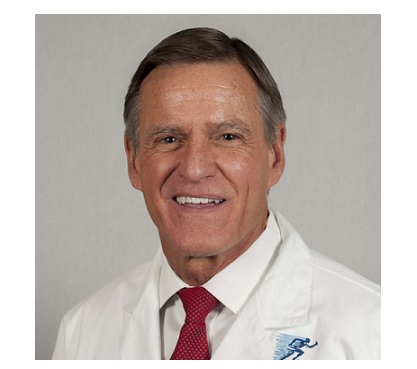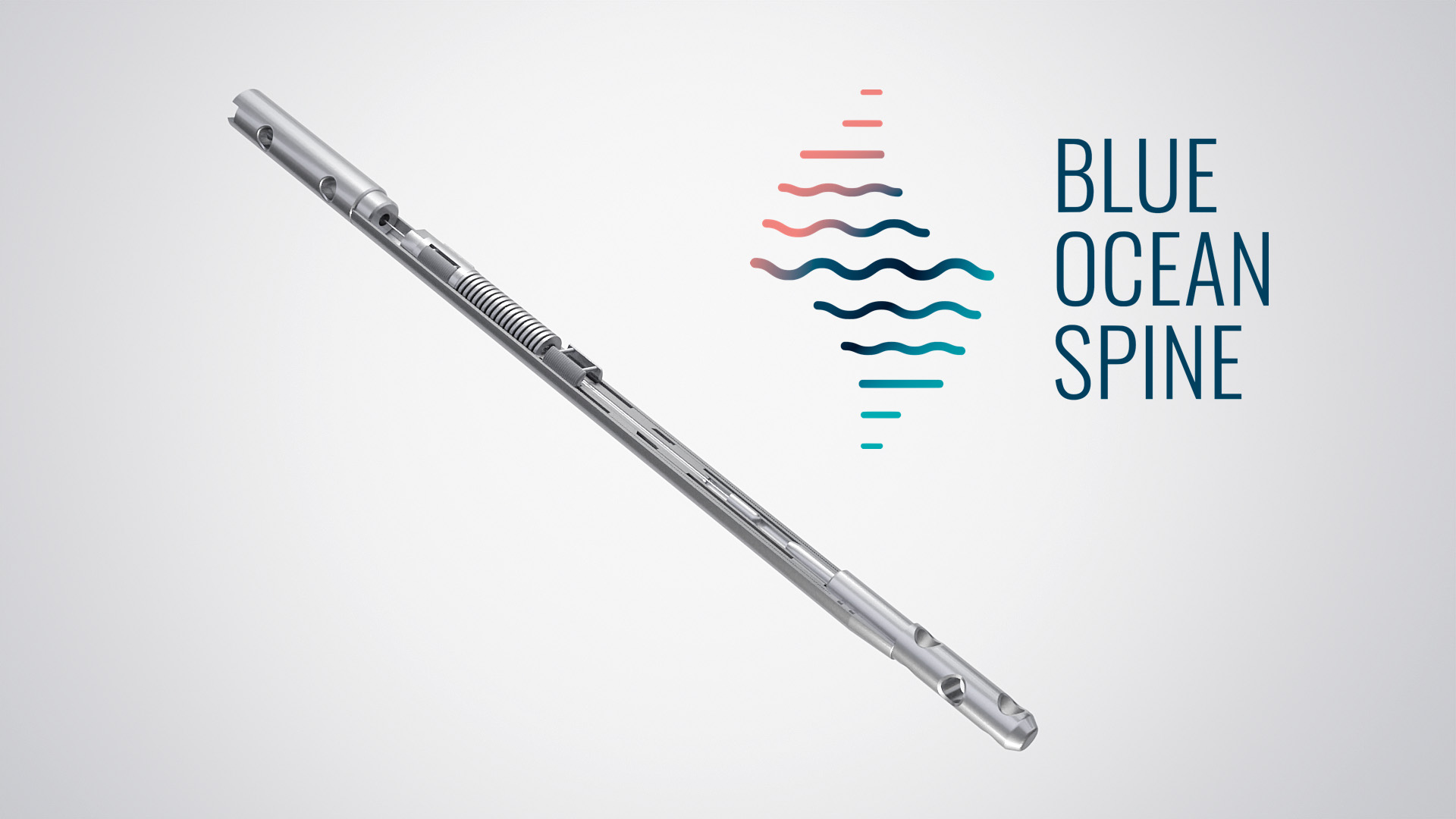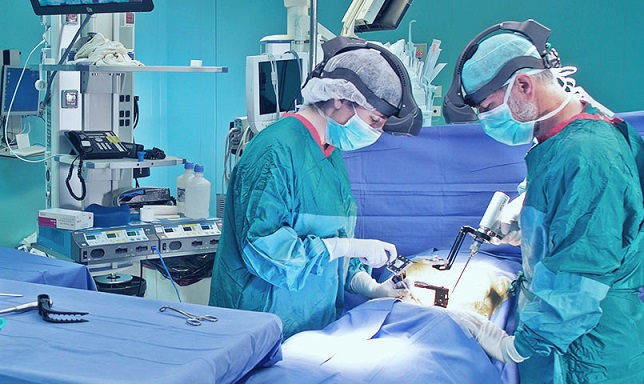Elizabeth Hofheinz, M.P.H., M.Ed.
After April 2021 there will be no more patients injured during the course of spine surgery. We wish that were true.
With approximately 60,000 patients harmed during spine surgery each year,1-5 however, it will take more time to reverse this problem. Awareness is the key that opens the door of change, however, and one group is supremely dedicated to reversing the tide: the Project for Safety in Spine Surgery (S3P).
Founded to great acclaim in 2016, i.e., standing room only attendance, S3P has a goal of cutting the estimated 60,000 harmful incidents in half by 2023. Its latest effort to focus attention on the issue is the launch of its inaugural Safety in Spine Surgery month—April 2021.
Shepherding this noble effort is Program Chair and S3P Founder Michael G. Vitale, M.D., M.P.H. He and his co chairs are tasked with ensuring that the event’s two live webinars—April 15 and April 29, 2021—hit their marks. Dr. Vitale told OSN: “The S3P meeting has been sold out each year for a reason: people know that we can make a substantial dent in safety issues surrounding spine surgery.”
The April 15 event will highlight “Predictive Analytics, Enabling Technology and Innovative Techniques That Make Your Spine OR Safer,” while the April 29 event will cover “Checklists, Guidelines, and Tricks to Avoid Complications and Improve Neurological Safety.”
Unique in their development and content, the two webinars were built around a competition—Best New Methodologies and Techniques to Enhance Safety in Spine Surgery for 2021. After reviewing over 100 submissions, the judges selected the top ten, five of which will be presented at each webinar.
Have your checklist? Check!
Dr. Vitale: “A strong component of the S3P mission is improving quality and reliability. Such rigor is made more likely when we use checklists to assure that we are adhering to best practice guidelines. Although there is ample evidence showing that such lists save lives, not all checklists are created equal. You must drill down into what makes a list impactful, something that we will address during one of these webinars.”
Engagement is key.
“When Ontario mandated that all of its healthcare systems had to use checklists it turned out that they were less effective than everyone anticipated6, said Dr. Vitale. “The problem was that they lacked buy-in because in creating the lists they had not engaged the frontline employees in the development of the lists. If the checklists had been formulated from the voices of techs, nurses, administrators and more, then they would have been vastly more successful.”
Who wants to be a millionaire (copilot)?
At some junction, it’s time for a consult. “My favorite OR ‘trick’ is ‘phone a friend,” states Dr. Vitale. “While many checklists are aimed at optimizing decision making in a crisis, sometimes you still need help. If, for example, you have lost intraoperative monitoring (i.e., the plane is going down), you can use a checklist, but there may still be a point where there is a gap between the evidence and the decision you need to make. That’s when you want a copilot.”
But checklists can make a big difference. “I look at this as a major opportunity for care improvement. In 2008 we had a spike in infections at our facility that led us to temporarily shut down our pediatric spine program. Because we knew that infections almost never have a single root cause, we gathered a multidisciplinary team (epidemiologists, infectious disease doctors, etc.) and created a checklist based on consensus driven best practices. The following year we had no SSIs.”
“Interestingly, every time we have reconvened the group to reconsider infection, the numbers again get close to zero. Each institution has to decide on the right cadence for these quality improvement efforts.” And then there is the other ‘elephant in the room’—wrong site surgery where Vitale and colleagues created a checklist to try to avoid these terrible situations.
This year we are finalizing a checklist detailing how best to respond to intraoperative neuromonitoring change in “high risk” spine surgery which will be presented for the first time by Dr. Lenke on April 15th.
Dr. Vitale: “There are many times where you don’t have all the data you need to make an evidence-based decision. The surgeon’s role is that of a conductor…you are surrounded by smart people who, in many cases, have been in the surgical arena longer than you have (like my OR nurse). Using their expertise can help avoid problems but we have to be open to listening.”
Overall, says Dr. Vitale, it is important to do away with binary thinking. “If we say, ‘We either need to continue this osteotomy and see if it decompresses the spinal cord or we should abort the surgery.’ Sometimes, the right decision is the third option I remember one time where we lost intraoperative potentials for almost an hour. Per our checklist, I called Larry Lenke, who highlighted that in fact the compression may be more proximal and that I should test in that location. We were able to restore function and finish the surgery.”
Today, more and more pundits are saying that the next hot commodity is our attention. Certainly, the OR is one place where this comes into play. “The reality,” says Dr. Vitale, “is that you need to have people feel that there is a crisis in order for them to pay attention. It may be as basic as saying, ‘I heard about a wrong site surgery at another hospital and there is no reason that it couldn’t happen here.’”
Spine surgeons need a stronger spine?
When it comes to reducing the number of spine surgeries overall, says Dr. Vitale: “The issue is that we are bad at saying ‘no.’ You often have a patient’s family saying, ‘Please help my child’ or an adult spine patient with heart disease, diabetes, etc. who feels desperate for relief. This is why we must rely on risk severity scores. True, the existing ones are not perfect, but at least they are an independent guideline. It is important to be able to say, for example, ‘You have a 12.5% chance of having a complication if we do this surgery.’”
Overall, says Dr. Vitale, we need to slow the line. “The literature shows us how important it is to optimize patients before surgery. So let’s slow down and assess the best ways to do that. Slowing down may also mean getting more help in the OR or changing the dose of surgery…maybe a limited operation is called for instead of a big one.”
Hope=Hawthorne Effect
The overarching message of the Safety in Spine Surgery Project is “Do Something.”
“Get together a multidisciplinary team to participate in the creation of a checklist and workflow that they will be proud to use…one that answers the real needs of the surgical team and patients. I would say that the Hawthorne effect is in play here, i.e., if you pay attention to a problem then it will improve to some degree simply because you are focusing on it. We are moving in the right direction, but we have to stay focused in order to reach our goals.”
Additional parties dedicated to the success of the event include Roger Härtl, M.D.; Larry Lenke, M.D.; Rajiv Sethi, M.D., and Jack Flynn, MD. S3P, allied health care providers, organizations, hospitals, and medical device companies.
Participating partners include the Pediatric Orthopaedic Society of North America, the Scoliosis Research Society, NeuroPoint Alliance, the Pediatric Spine Study Group, the Harms Study Group, the Society for Minimally Invasive Spine Surgery, the International Society for the Advancement of Spine Surgery, Cervical Spine Research Society, NewYork-Presbyterian Hospital, Medtronic, Stryker, Zimmer Biomet, NuVasive, and OrthoPediatrics.
To register for the webinars or find out more about Safety in Spine Surgery Month this April, visit http://safetyinspinesurgery.com/1st-annual-safety-in-spine-surgery-month-online-cme/
Interested parties may also participate in the first Annual Safety in Spine Surgery month by posting their own successes and difficulties using the hashtags #safetyinspinesurgery and #s3p.
References:
- Lam SK, Pan I-W, Harris DA, Sayama CM, Luerssen TG, Jea A. Patient-, procedure-, and hospital-related risk factors of allogeneic and autologous blood transfusion in pediatric spinal fusion surgery in the United States. Spine (Phila Pa 1976). 2015;40(8):560-569. doi:10.1097/BRS.0000000000000816.
- Rajaee SS, Bae HW, Kanim LEA, Delamarter RB. Spinal fusion in the United States: analysis of trends from 1998 to 2008. Spine (Phila Pa 1976). 2012;37(1):67-76. doi:10.1097/BRS.0b013e31820cccfb.
- Reames DL, Smith JS, Fu K-MG, et al. Complications in the surgical treatment of 19,360 cases of pediatric scoliosis: a review of the Scoliosis Research Society Morbidity and Mortality database. Spine (Phila Pa 1976).2011;36(18):1484-1491. doi:10.1097/BRS.0b013e3181f3a326.
- Smith JS, Fu K-MG, Polly DW, et al. Complication rates of three common spine procedures and rates of thromboembolism following spine surgery based on 108,419 procedures: a report from the Scoliosis Research Society Morbidity and Mortality Committee. Spine (Phila Pa 1976). 2010;35(24):2140-2149. doi:10.1097/BRS.0b013e3181cbc8e7.
- Fu K-MG, Smith JS, Polly DW, et al. Morbidity and mortality associated with spinal surgery in children: a review of the Scoliosis Research Society morbidity and mortality database. J Neurosurg Pediatr. 2011;7(1):37-41. doi:10.3171/2010.10.PEDS10212.
- https://www.nejm.org/doi/full/10.1056/NEJMsa1308261








